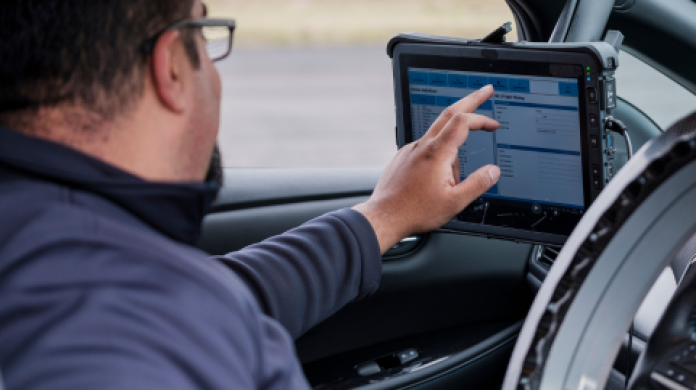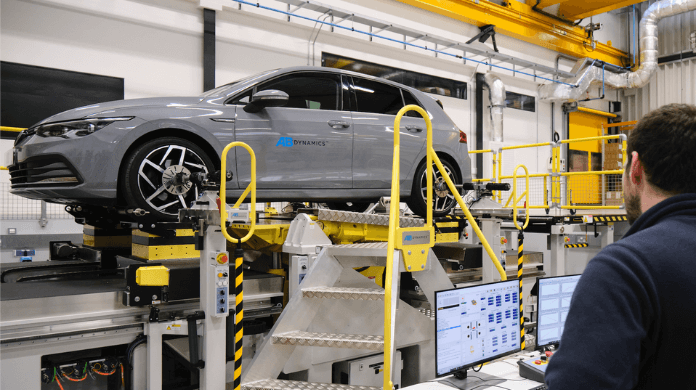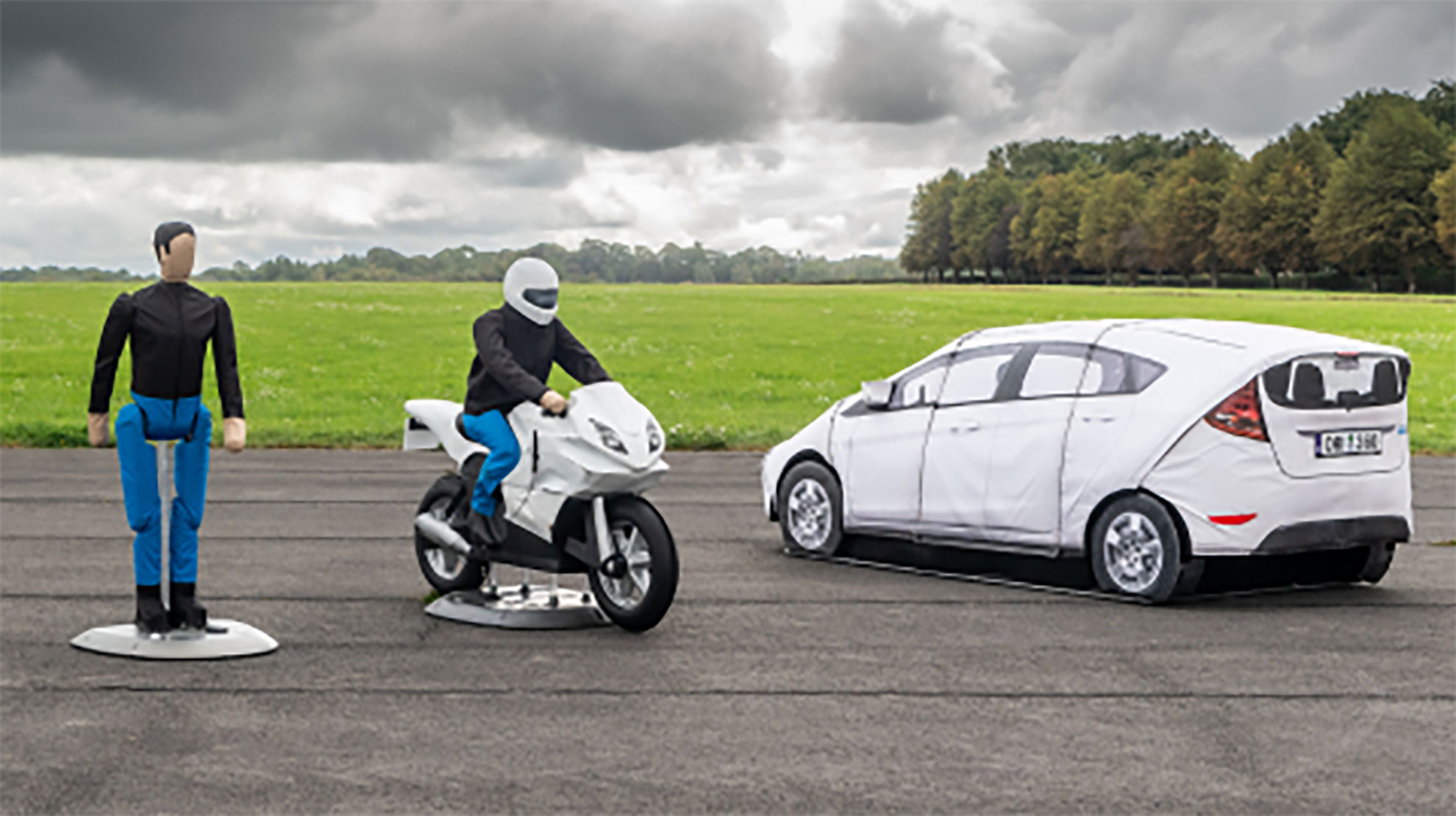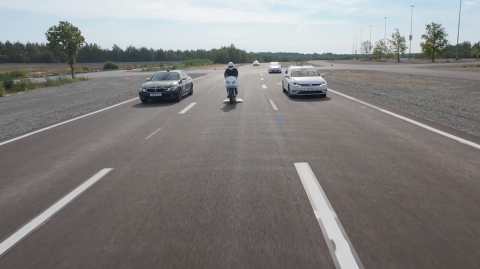In 2024, the European New Car Assessment Programme (Euro NCAP) introduced an update to its Assisted Driving Grading system. In this blog post, Leo Evans, Lead Engineer at AB Dynamics, explores what the update means for the industry, how it aims to enhance consumer understanding, and the impact it will have on the development and assessment of assisted driving systems.

Assessing the performance of assisted driving systems
More and more vehicles are coming to the market with increasingly sophisticated assisted driving systems. The new capabilities of these systems can lead to ambiguity amongst some consumers about the level of assistance they provide. Complaints about some assisted driving systems having misleading names, leading to drivers assuming they are in self-driving or autonomous vehicles when they aren’t are well documented. There are also issues where drivers are opting to disable safety systems due to them being perceived as a nuisance rather than providing assistance.
So how are consumers meant to fairly assess the capabilities and effectiveness of these systems to make informed decisions when purchasing a new vehicle?
Euro NCAP’s new Assisted Driving Grading
Assisted driving refers to level 2 on the SAE driving automation scale. These systems assist the driver to varying degrees but critically the driver remains responsible for all aspects of driving. The more sophisticated level 2 systems combine multiple technologies working in tandem, such as adaptive cruise control and automated lane-keep assist.
Typically, these systems are offered as options and as such aren’t considered in the Euro NCAP star rating. In 2018, Euro NCAP began to study the assisted driving systems available on the market and in 2020 introduced a grading programme based on dedicated test and assessment protocols. The grading system has been updated for 2024 and aims to provide consumers with more information on assisted driving systems and enable them to directly compare their performance with other vehicles on the market.
The updated grading system focuses on two key areas: Assistance Competence, which is the balance between Vehicle Assistance and Driver Engagement, and Safety Backup. The sum of the scores in Assistance Competence and Safety Backup is used in a grading system, similar to the five-star safety rating. Vehicles are currently rated ‘Entry’, ‘Moderate’, ‘Good’ and ‘Very Good’.
The ‘Balance Principal’
The grading system uses what Euro NCAP refer to as the ‘Balance Principal’: The Assistance Competence score is the balance between Vehicle Assistance and Driver Engagement. Driver Engagement includes driver monitoring, driving collaboration, system status and consumer information. Vehicle Assistance includes speed assistance, steering assistance and Adaptive Cruise Control (ACC) performance.
The higher the level of assistance, the more the driver must be engaged by the system. The Euro NCAP Assisted Driving grading places a greater emphasis on keeping the driver engaged and this will be the limiting factor in its scoring. Currently, it is separate to Euro NCAP’s safety rating, but they will be linked in 2026 and fully integrated by 2029. This means that vehicle manufacturers striving for a 5-star rating will need to apply the same level of effort to assisted driving systems as they pay to other safety systems.
The growing quantity and complexity of test scenarios
The aim of the updated Assisted Driving rating system is ultimately to improve road safety, which is unquestionably a good thing. However, to assess assisted driving systems more thoroughly, Euro NCAP has increased the quantity and complexity of test scenarios, making achieving a rating more costly and time-consuming. The latest protocol introduces 40 new on track tests requiring driving robots and ADAS targets, doubling the test effort.
The new test scenarios include the ACC Car-to-Motorcyclist, Collision Avoidance Car-to-Motorcyclist, Car-to-Bicyclist, Car-to-Pedestrian and the Lane Support system – lane change with overtaking vehicle test scenarios. This focus on VRUs (Vulnerable Road Users) will thoroughly challenge assisted driving sensor systems. Motorcyclists, for example, can be difficult to accurately detect and classify when in close proximity to other vehicles, potentially getting lost, or being detected as a single object.
These new scenarios are also more realistic and consider the reality where vehicles may not be centred in the lane-ahead. For motorcyclists there is also the possibility of lane-sharing, bringing additional challenges in establishing whether the lane-ahead is clear. The new scenarios include test cases ranging from 0-100% overlap, varying the potential hit point and better reflecting the real-world challenges. In order to score well, assisted driving systems need to slow down progressively and predictably in the presence of hazardous events to deliver a safe and human-like response.
Increasing test efficiency
Euro NCAP testing is already a time and cost-consuming process, and these additional tests place a greater workload on manufacturers and test houses. To increase efficiency of testing AB Dynamics has enabled the automation of all of the relevant tests within the 2024 Assisted Driving protocol through the configurable test groups in the latest version of our RC software. It allows users to quickly and simply create all the new tests included in Euro NCAP’s Assisted Driving protocol. AB Dynamics enables the coordination of all of the ‘actors’ in a scenario, including robot-controlled vehicles and ADAS targets, allowing the test protocol to be fully defined and executed through a single ecosystem.
Without robotic control of the vehicle, the cut-in scenarios are particularly difficult to orchestrate. Timing when and how the cut-in vehicle should begin its manoeuvre so that it finishes the lane change at precisely the right time relative to the vehicle under test is very complicated. AB Dynamics’ software automatically calculates the trajectories and synchronises the test vehicle and applicable ADAS targets.
Conclusion
Euro NCAP's update to its Assisted Driving grading system marks a significant step forward in enhancing consumer awareness and understanding of the capabilities and limitations of assisted driving technologies. It provides consumers with a clearer picture of how these systems perform and encourages manufacturers to prioritise driver engagement and safety.
The expansion of test scenarios, although demanding for manufacturers and test houses, ensures that vehicles are evaluated under more realistic conditions, leading to better reflection of their performance in real-world situations. The quantity and complexity of testing is only going to increase as assisted driving systems become more advanced. As a result, improving efficiency is increasingly important to all parties in the test industry.
For more information on how AB Dynamics can support your AD programme, contact us.











